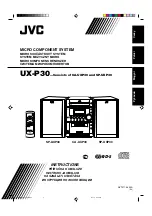
vi
Cisco TelePresence System Release 1.6 Administration Guide
OL-13676-05
Preface
•
Cisco TelePresence Multipoint Switch Administration Guide
IPSLA for In-Band Traffic Analysis
See the
Cisco TelePresence System Command-Line Interface Reference Guide
for information about the
Internet Protocol Service Level Agreement (IPSLA) for in-band simulated traffic analysis feature.
Login History
For enhanced security, the system reports the most recent login history when you initially log into the
system. The login history reports the user, time, and location of the last successful login.
See the
Cisco TelePresence System Command-Line Interface Reference Guide
for more information.
Managing Passwords
To ensure that your system is protected, you must update your password every 60 days. The system alerts
you to the number of days remaining on your current password in the login banner when you log onto
the system. The system issues a warning when 7 days remain on your current password, and so on until
the password expires.
Warning
If the password is allowed to expire, the system will ignore the login attempt and you cannot access
the system. You must create a new password using the Cisco Unified Communications Manager
Administration application.
See the
Cisco Unified Communications Manager Configuration Guide for the Cisco TelePresence
System
for more information.
Multi Cluster Cisco Unified CM
If you use Cisco TelePresence Manager (CTS-Man), the first time setup process allows Administrators
to add more than one Cisco Unified CM cluster. An Administrator can then add, modify, and view the
status of up to 5 individual Cisco Unified CM clusters. Based on your dial-plan, you may need to
configure the CTS device Dial Plan configuration settings in the Cisco Unified CM. See the following
documentation for more information:
•
Dial Plan Information section of the
Cisco Unified Communications Manager Configuration Guide
for the Cisco TelePresence System
.
•
Cisco TelePresence Manager
home page on Cisco.com.
Multipoint LTRP
Support for multi-point Long Term Reference Pictures (LTRP). CTS endpoints periodically send back
acknowledgement (ACK) or negative-acknowledgement (NACK) about the Real Time Protocol (RTP)
video packets they receive or expect to receive and mark them as reference frames or LTRPs. If any video
packet loss is observed, Cisco has patented a method where information is encoded to a smaller repair
frame that is transmitted based on the last reference frame that was successfully sent to all receivers. This
allows for fast and efficient recovery after network losses or jitter without further burdening the network
with large Intelligent Disaster Recovery (IDR) frames. LTRP works with
HD Interoperability
.
One Phone Per Office
In Cisco Unified CM, the One Phone Per Office feature provides the functions of a CTS and a
Cisco Unified IP Phone in one system. See the One Phone Per Office section in the
Cisco Unified Communications Manager Configuration Guide for the Cisco TelePresence System
for
detailed information.
















































